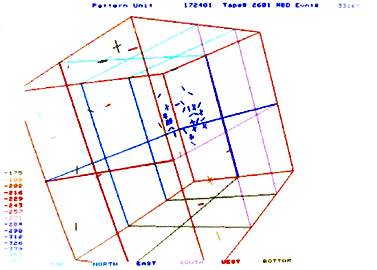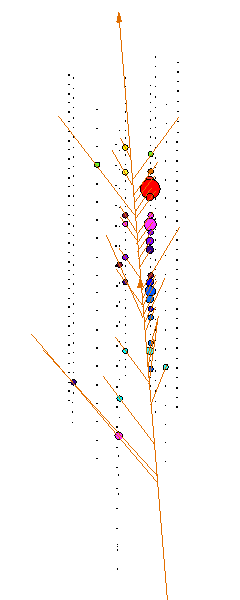| >>> | weblog context |
|
| home | site map | about context | lang >>> español | |
|
> interact with the digital world |
|
|
|
|
||||||||

|
|
|
|
|
|
antarctic neutrino telescope "Sunk more than one-and-a-half kilometers beneath the South Pole, the National Science Foundation-funded AMANDA Telescope is designed to look not up, but down, through the Earth to the sky in the Northern Hemisphere.... The Earth between the detector at the South Pole and the northern sky filters out everything but neutrinos. The AMANDA telescope array consists of 677 optical modules, each the size of a bowling ball, arrayed on electrical cables set deep in the ice beneath the South Pole and arranged in a cylinder 500 meters in height and 120 meters in diameter... plans are being made to construct a much larger detector know as IceCube. To consist of 4,800 optical modules on 80 strings, the IceCube detector would effectively convert a cubic kilometer of Antarctic ice into the world's largest scientific instrument." From *Polar telescope sights first high-energy neutrinos* The *Antarctic Muon and Neutrino Detector Array (AMANDA)* is a collaboration among U.S., Belgian, Swedish and German universities.
|
|
|
|
|
deep-sea neutrino telescope In September 1999, begin the installation of "an unusual telescope in the sea off the South of France, which will study the heavens by looking down rather than up. The telescope, called ANTARES, will lie at the bottom of the Mediterranean, 2.4 km below the sea surface, and 40 km south-east of Marseille... Ultimately, ANTARES will consist of enough detectors to turn a cubic kilometre of the Mediterranean into a neutrino telescope." From *Unique telescope puts to sea to trawl for neutrinos* *ANTARES* is now a CERN "Recognized experiment". The collaboration consists of 16 particle physics institutes, 2 marine science institutes and an astronomy institute from France, Italy, the Netherlands, Russia, Spain and the UK.
|
|
|
|
|
|

|
:: source :: references :: grafik The supernova SN1987A Nautile launching for the electro-optical connexion Supernova SN1987A explosion amanda icefishing |
|
|
|
|
| home | site map | about context | lang > español | |
context weblog >>> http://straddle3.net/context